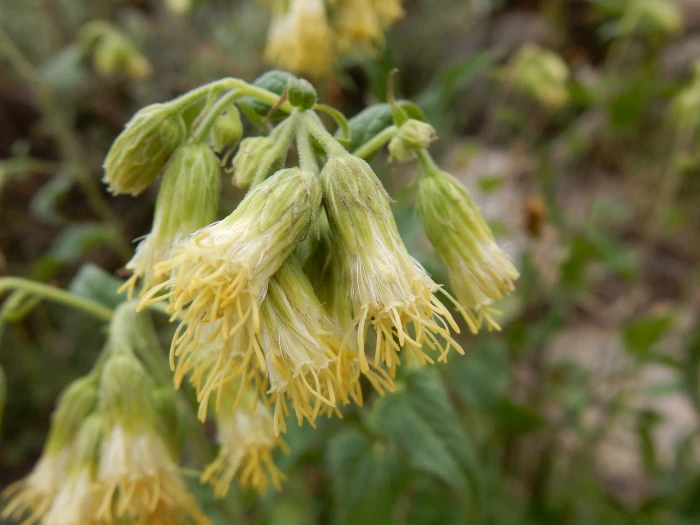Tasselflower Brickellbush
(Brickellia grandiflora)
Tasselflower Brickellbush (Brickellia grandiflora)
/
/

Matt Lavin
CC BY-SA 2.0
Image By:
Matt Lavin
Recorded By:
Copyright:
CC BY-SA 2.0
Copyright Notice:
Photo by: Matt Lavin | License Type: CC BY-SA 2.0 | License URL: https://creativecommons.org/licenses/by-sa/2.0/ | Uploader: Matt Lavin | Publisher: Flickr |


















































Estimated Native Range
Climate Requirements for New York, New York
| This Plant | Your Site | Plant Suitability for Your Location | ||
|---|---|---|---|---|
| • Precipitation | 5" - 88" | 46" | Aquatic | Aquatic |
| • High Temp. | 59°F - 103°F | 85°F | Your summer temperatures are normal for this plant. | Excellent |
| • Low Temp. | -6°F - 53°F | 24°F | Your winter temperatures are normal for this plant | Excellent |
This plant may not grow well at your location - your precipitation is too high.
Summary
Brickellia grandiflora, commonly known as Tasselflower Brickellbush, is a deciduous perennial subshrub or herb native to open woodlands, forest edges, and rocky slopes in the Southwestern United States, particularly in the Great Plains and Rocky Mountains. It typically grows to a height of up to 70 centimeters with a few-branched stem structure. The plant is notable for its clusters of small, fluffy, yellow and white flowers that bloom in the summer, adding a subtle charm to the garden landscape. The flowers are not particularly showy but do attract pollinators such as butterflies and bees.
Tasselflower Brickellbush is valued for its drought tolerance and ability to thrive in challenging environments, making it a suitable choice for xeriscaping and naturalistic plantings. It is often used in native plant gardens, rock gardens, and as a border plant. This plant prefers full sun to part shade and requires low amounts of water once established, making it an easy-care option for gardeners. It is best suited to well-drained soils and can tolerate a range of soil types, from sandy to loamy. While generally pest and disease-free, it can occasionally suffer from root rot if overwatered or planted in poorly drained soils.CC BY-SA 4.0
Tasselflower Brickellbush is valued for its drought tolerance and ability to thrive in challenging environments, making it a suitable choice for xeriscaping and naturalistic plantings. It is often used in native plant gardens, rock gardens, and as a border plant. This plant prefers full sun to part shade and requires low amounts of water once established, making it an easy-care option for gardeners. It is best suited to well-drained soils and can tolerate a range of soil types, from sandy to loamy. While generally pest and disease-free, it can occasionally suffer from root rot if overwatered or planted in poorly drained soils.CC BY-SA 4.0
Plant Description
- Plant Type: Subshrub, Herb
- Height: 4-5 feet
- Width: 2-3 feet
- Growth Rate: Moderate
- Flower Color: Yellow, White
- Flowering Season: Summer
- Leaf Retention: Deciduous
Growth Requirements
- Sun: Full Sun, Part Shade
- Water: Low
- Drainage: Medium
Common Uses
Bee Garden, Butterfly Garden, Erosion Control, Low Maintenance, Rock Garden
Natural Habitat
Native to open woodlands, forest edges, and rocky slopes
Other Names
Common Names: Mountain Brickellbush, Tasselflower Brickellia
Scientific Names: Brickellia grandiflora, Brickellia umbellata, Brickellia grandiflora var. petiolaris, Brickellia grandiflora var. grandiflora, Coleosanthus grandiflorus, Coleosanthus congestus, Eupatorium grandiflorum, Brickellia grandiflora var. minor, Coleosanthus umbellatus
GBIF Accepted Name: Brickellia grandiflora (Hook.) Nutt.